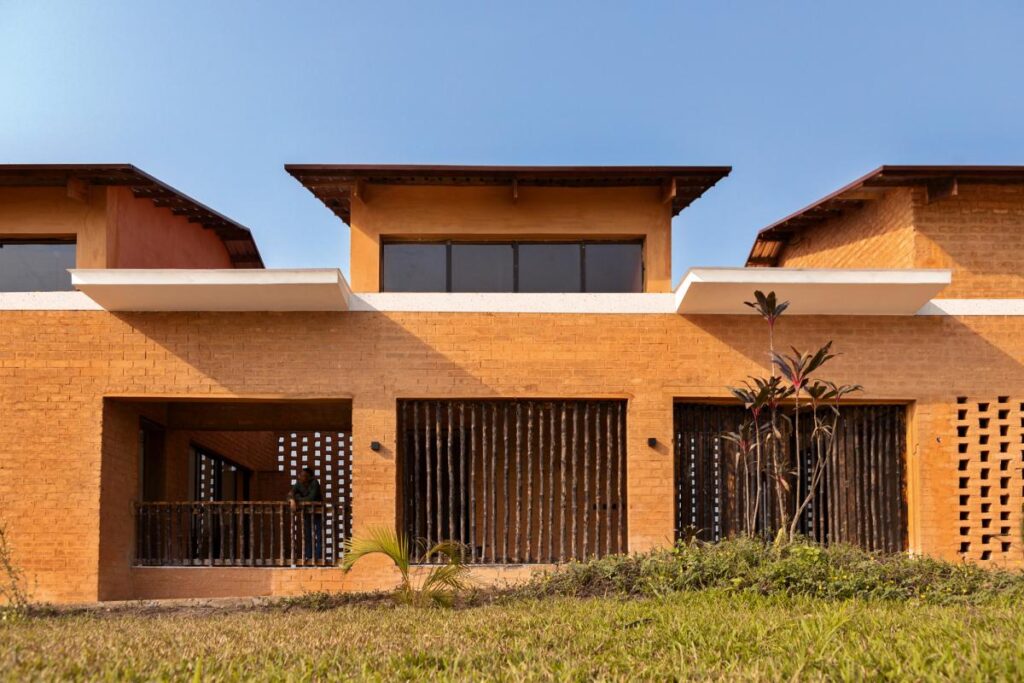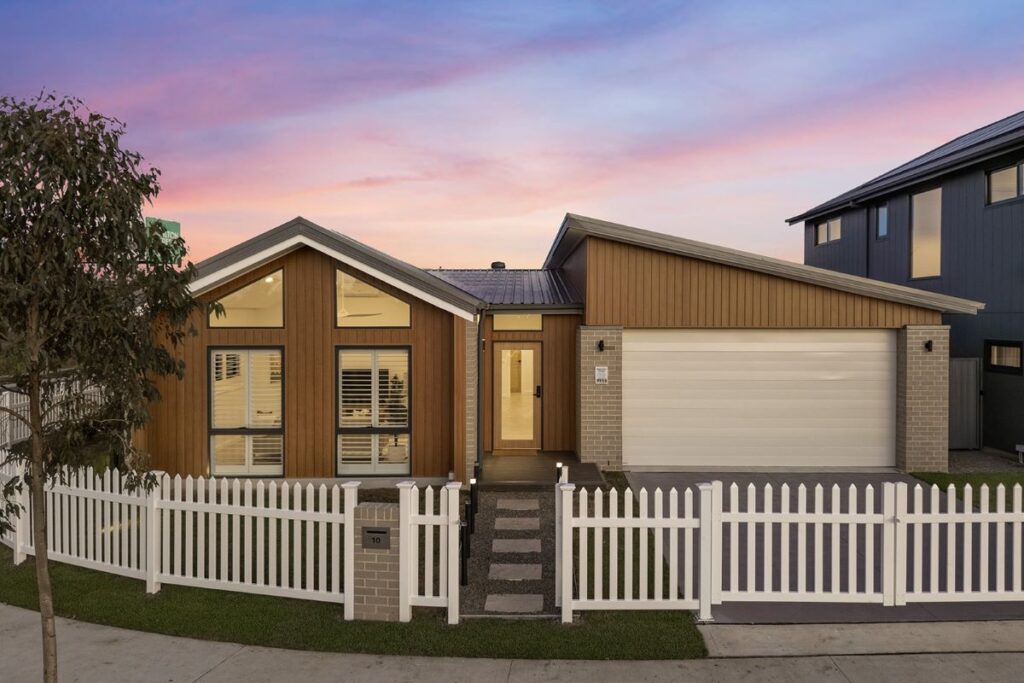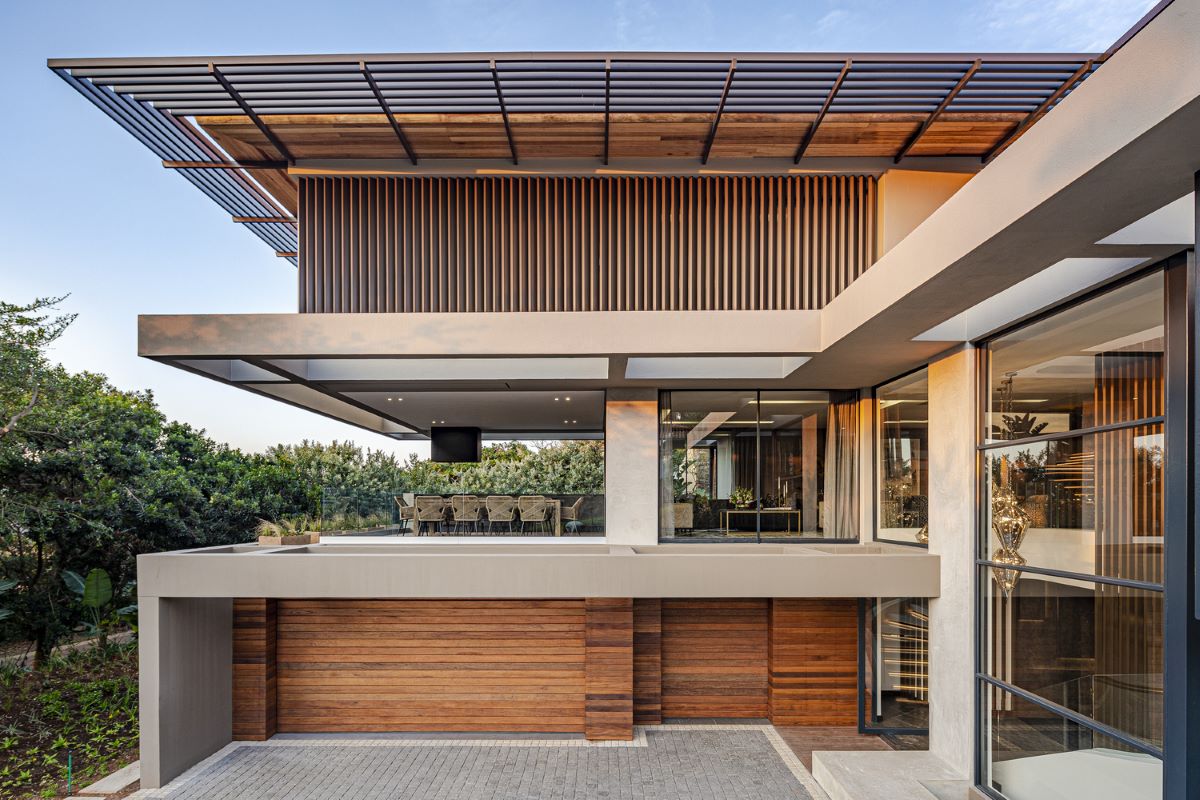How Does a Kiama Residential Architect Create Homes That Suit the Local Climate?
Nestled between dramatic coastal cliffs and rolling green hills, Kiama presents unique environmental challenges that demand thoughtful architectural responses. The region experiences intense sun exposure, strong coastal winds, and seasonal weather variations that can dramatically impact home comfort and energy consumption. Bushfire risks from the escarpment and potential flooding in low-lying areas add another layer of complexity to residential design.
A skilled Kiama residential architect understands these conditions intimately, crafting local climate homes that work with nature rather than against it. This approach goes beyond basic shelter to create spaces that remain comfortable year-round whilst minimising environmental impact.
Sustainable home design in Kiama requires careful consideration of:
- Solar positioning to capture winter warmth whilst avoiding summer overheating
- Wind patterns that can provide natural cooling or create uncomfortable drafts
- Native vegetation that thrives without excessive irrigation
- Building materials that withstand coastal salt air and temperature fluctuations
The most successful residential projects achieve harmony between client lifestyle needs and environmental responsiveness. Homes designed for Kiama’s specific climate conditions not only reduce energy bills and maintenance costs but also create healthier, more comfortable living environments. This climate-conscious approach represents the foundation of responsible architecture in coastal NSW, where environmental factors play such a significant role in daily life.
What Are the Key Local Climate Factors in Kiama That Influence Home Design?
Kiama climate challenges present unique considerations that shape every architectural decision. The coastal location brings distinct environmental patterns that architects must understand and respond to through thoughtful design strategies.
Sun Exposure and Seasonal Variations
Sun exposure in Kiama follows predictable seasonal patterns that architects leverage for optimal home performance. During summer months, the sun tracks high overhead, creating opportunities for deep eaves and overhangs to block harsh rays whilst maintaining winter solar access. The eastern coastline receives intense morning sun, particularly affecting beachside properties where glare and heat gain require careful window positioning and shading solutions.
Winter brings lower sun angles that architects harness for passive solar heating. North-facing living areas capture maximum warmth during cooler months, reducing reliance on artificial heating systems.
Wind Patterns and Natural Ventilation
Wind patterns from the southeast dominate Kiama’s coastal environment, bringing both cooling ocean breezes and potential weather challenges. Architects position openings to capture these prevailing winds for natural cross-ventilation, reducing cooling costs and improving indoor comfort.
Strong easterly winds during storm events influence structural considerations and window protection strategies.
Environmental Risk Factors
Bushfire risk varies across Kiama’s diverse topography, with elevated areas and properties backing onto bushland requiring specific BAL (Bushfire Attack Level) compliance measures. Flood risk affects low-lying areas near waterways and coastal zones, influencing foundation design, material selection, and floor level requirements that architects must integrate into their climate-responsive designs. Visit https://www.kiama.nsw.gov.au/Council/Projects/Coastal-Management-Program to get about the coastal management program of Kiama.
How Do Kiama Architects Maximise Solar Access and Natural Ventilation?
Solar passive design forms the foundation of climate-responsive architecture in Kiama. Architects begin with comprehensive site analysis, studying the sun’s path across different seasons to determine optimal building orientation. This process involves mapping shadow patterns throughout the year, ensuring living areas receive maximum winter sun whilst avoiding excessive summer heat gain.
Window positioning becomes a precise science in Kiama homes. North-facing windows capture winter warmth, whilst strategically placed eaves and awnings prevent harsh summer sun from penetrating interiors. East-facing windows welcome gentle morning light, and west-facing openings require careful shading to block intense afternoon heat.
Natural ventilation strategies harness Kiama’s coastal breezes through thoughtful design. Architects position windows and doors to create cross-ventilation pathways, drawing cool ocean air through living spaces. High-level windows or clerestory openings allow hot air to escape, creating natural thermal chimneys that maintain comfortable indoor temperatures.
Balcony orientation serves multiple climate functions beyond outdoor living. Covered balconies act as thermal buffers, reducing heat transfer into interior spaces. Strategic placement captures prevailing winds for natural cooling whilst providing shaded outdoor areas. Deep balconies on northern facades control seasonal sun penetration, allowing winter warmth whilst blocking summer heat.
These integrated approaches reduce reliance on mechanical heating and cooling systems, creating comfortable homes that work with Kiama’s natural climate patterns rather than against them.
How Do Kiama Architects Incorporate Sustainable and Energy-Efficient Features Into Their Designs?
Energy-efficient homes Kiama architects design go beyond basic sustainability requirements through strategic integration of renewable energy systems and water management solutions. These features work together to create homes that respond intelligently to the coastal environment whilst reducing long-term operating costs.
Integrating Photovoltaic Solar Panels
Photovoltaic solar panels become seamlessly woven into the architectural design rather than appearing as afterthoughts. Kiama architects position panels to align with optimal roof angles and orientations, often incorporating them into the building’s aesthetic through:
- Integrated mounting systems that follow the roofline’s natural flow
- Strategic placement on north-facing surfaces to maximise energy generation
- Battery storage solutions housed within purpose-built utility areas
- Smart inverter positioning that maintains clean exterior lines
The coastal location provides excellent solar exposure, making these systems particularly effective for achieving energy independence.

Designing Rainwater Collection Systems
Rainwater collection systems address both sustainability goals and practical water management needs in the coastal climate. Architects design these systems as integral building components:
- Concealed guttering and downpipes that maintain architectural integrity
- Underground storage tanks positioned to avoid impacting garden design
- Gravity-fed distribution systems that reduce pump energy requirements
- First-flush diverters ensuring water quality for household use
These systems prove especially valuable during dry periods common to the region, whilst reducing stormwater runoff that can impact local waterways.
How Do Kiama Architects Address Environmental Risks Like Bushfires and Floods In Their Designs?
Kiama’s coastal location presents unique environmental challenges that require careful planning and expert knowledge. Local architects work with energy efficiency consultants to develop comprehensive risk mitigation strategies that protect homes whilst maintaining design excellence.
Bushfire attack level (BAL) compliance in designs by Kiama architects
Bushfire attack level (BAL) compliance in designs by Kiama architects forms a critical component of the planning process. Architects assess each site’s bushfire risk using detailed vegetation mapping and topographical analysis. This assessment determines the appropriate BAL rating, which dictates specific construction requirements:
- BAL-Low to BAL-12.5: Standard construction with ember protection measures
- BAL-19 to BAL-29: Enhanced window specifications and external wall systems
- BAL-40 and BAL-FZ: Specialised materials and construction methods required
Flood mapping compliance in designs by Kiama architects
Flood mapping compliance in designs by Kiama architects ensures homes meet council requirements for flood-prone areas. Architects study detailed flood studies and incorporate elevated floor levels, flood-resistant materials, and strategic placement of utilities above potential flood heights.
The collaborative approach with specialists allows architects to integrate safety measures seamlessly into their designs. Bushfire-resistant landscaping zones create defensible spaces around homes, whilst flood-resilient foundations and drainage systems protect against water damage. These protective elements become integral parts of the architectural design rather than afterthoughts, ensuring homes remain both safe and aesthetically pleasing.
How Kiama Architects Use Native Plant Landscaping to Enhance Climate-Sensitive Home Design
Native plant landscaping in Kiama, as implemented by local architects, plays a crucial role in climate-responsive home design. It creates sustainable outdoor spaces that are in tune with the natural environment.
The Benefits of Native Plants in Landscaping
Kiama’s coastal climate is home to a wide variety of indigenous plant species. Once established, these plants require very little water, making them ideal for environmentally conscious homeowners.
Here are some reasons why native plants are beneficial:
- Water Efficiency: Indigenous species are adapted to the local climate and can survive on rainfall alone, reducing the need for irrigation.
- Biodiversity Support: Native plants provide habitat and food for local wildlife, promoting biodiversity in the area.
- Soil Health: These plants have deep root systems that improve soil structure and prevent erosion.
- Aesthetic Appeal: Native landscaping enhances the beauty of the surroundings by showcasing the unique flora of Kiama.
How Architects Choose Plants for Climate-Sensitive Designs
Architects carefully select plants based on their ability to thrive in specific environmental conditions. This includes considering factors such as rainfall patterns, soil type, and exposure to coastal winds.
Some popular choices among Kiama architects include:
- Coastal banksia and tea tree for creating windbreaks and providing privacy
- Native grasses like lomandra for low-maintenance ground cover
- Coastal rosemary and westringia for hardy hedging that can withstand drought
- Eucalyptus varieties that are well-suited to the local microclimate
Maximising Outdoor Comfort with Shaded Spaces
Incorporating shaded outdoor areas into home designs helps extend living spaces while minimising heat gain indoors. Architects strategically position deciduous native trees to provide shade during summer months when leaves are fully developed.
Here are some ways in which shaded spaces benefit homeowners:
- Comfortable Outdoor Entertaining: Shady patios or verandahs offer pleasant spots for hosting gatherings even on hot days.
- Natural Cooling: The presence of trees creates cooler microclimates around outdoor areas through evapotranspiration.
- Energy Efficiency: By blocking direct sunlight from entering north-facing windows, shaded spaces reduce reliance on air conditioning.
Creating Functional Outdoor Areas with Structures
Architects also incorporate structures such as pergolas or covered kitchens into their designs to enhance functionality and comfort outdoors. These elements provide shelter from rain or harsh sun while still allowing airflow.
Here are some benefits of including structures in outdoor spaces:
- Flexible Use: Covered areas can be used year-round regardless of weather conditions.
- Aesthetic Appeal: Well-designed structures add visual interest and architectural character to the overall design.
- Integration with Nature: Climbing plants growing on these structures create green canopies that blend seamlessly with the landscape.
By combining native plant landscaping techniques with thoughtful architectural design strategies, Kiama architects are able to create homes that not only respond positively to climatic challenges but also celebrate the unique beauty of their coastal environment.
See Also : Why a Residential Architect Kiama Is the Key to a Functional Family Home
How Do Kiama Architects Balance Client Lifestyle Needs With Environmental Responsiveness In Their Designs?
Client-focused architectural design by Kiama architects begins with understanding each family’s unique way of living. A residential architect might discover that one client loves morning coffee on an east-facing deck, while another family needs a protected outdoor dining space for weekend gatherings. These personal preferences shape the design process, yet architects ensure every choice supports climate responsiveness.
The design process involves detailed conversations about daily routines, entertaining habits, and future needs. Architects translate these lifestyle requirements into climate-smart solutions – perhaps positioning a home office to capture northern light while avoiding afternoon heat, or creating flexible living spaces that open to cooling breezes during summer months.
Site-specific solutions in designs by Kiama architects consider the unique characteristics of each block of land. A sloping site might inspire a split-level design that captures ocean views while protecting from prevailing winds. Properties with established trees receive designs that preserve natural shade and windbreaks, reducing the need for artificial cooling.
Topography plays a crucial role in these decisions. Architects position living areas to take advantage of natural slopes for drainage while ensuring bedrooms face away from busy roads. Each site presents different opportunities – a north-facing slope might allow for passive solar heating, while a sheltered valley position could focus on natural ventilation strategies.
How a Kiama Residential Architect Creates Homes That Suit the Local Climate involves this careful balance between personal desires and environmental wisdom, creating homes that feel both custom-made and naturally suited to their surroundings.

What Role Do Local Council Regulations Play In Climate-Suited Home Design?
Local council regulations NSW affecting designs by Kiama architects create a framework that shapes every climate-responsive home project. These regulations establish minimum standards for energy efficiency, water management, and environmental protection that architects must navigate whilst delivering exceptional design outcomes.
Key Regulatory Requirements
Kiama Council’s development control plans mandate specific sustainability measures:
- Energy efficiency ratings – New homes must achieve minimum BASIX scores for thermal performance
- Water sensitive urban design – Requirements for stormwater management and rainwater collection systems
- Bushfire protection – BAL (Bushfire Attack Level) ratings determine construction materials and design elements in high-risk zones
- Flood planning – Minimum floor levels and flood-resistant construction methods in designated areas
Balancing Compliance with Innovation
Environmental sustainability compliance in designs by Kiama architects becomes an opportunity rather than a constraint. Skilled architects use these requirements as design drivers, creating homes that exceed regulatory minimums whilst maintaining architectural integrity.
Smart architects integrate solar panel positioning requirements into roof design aesthetics. They transform mandatory water tank installations into landscape features. Bushfire-resistant materials become design elements that enhance rather than compromise visual appeal.
How a Kiama Residential Architect Creates Homes That Suit the Local Climate involves working within these regulatory parameters to deliver homes that are both compliant and exceptional – proving that environmental responsibility and design excellence work hand in hand.

